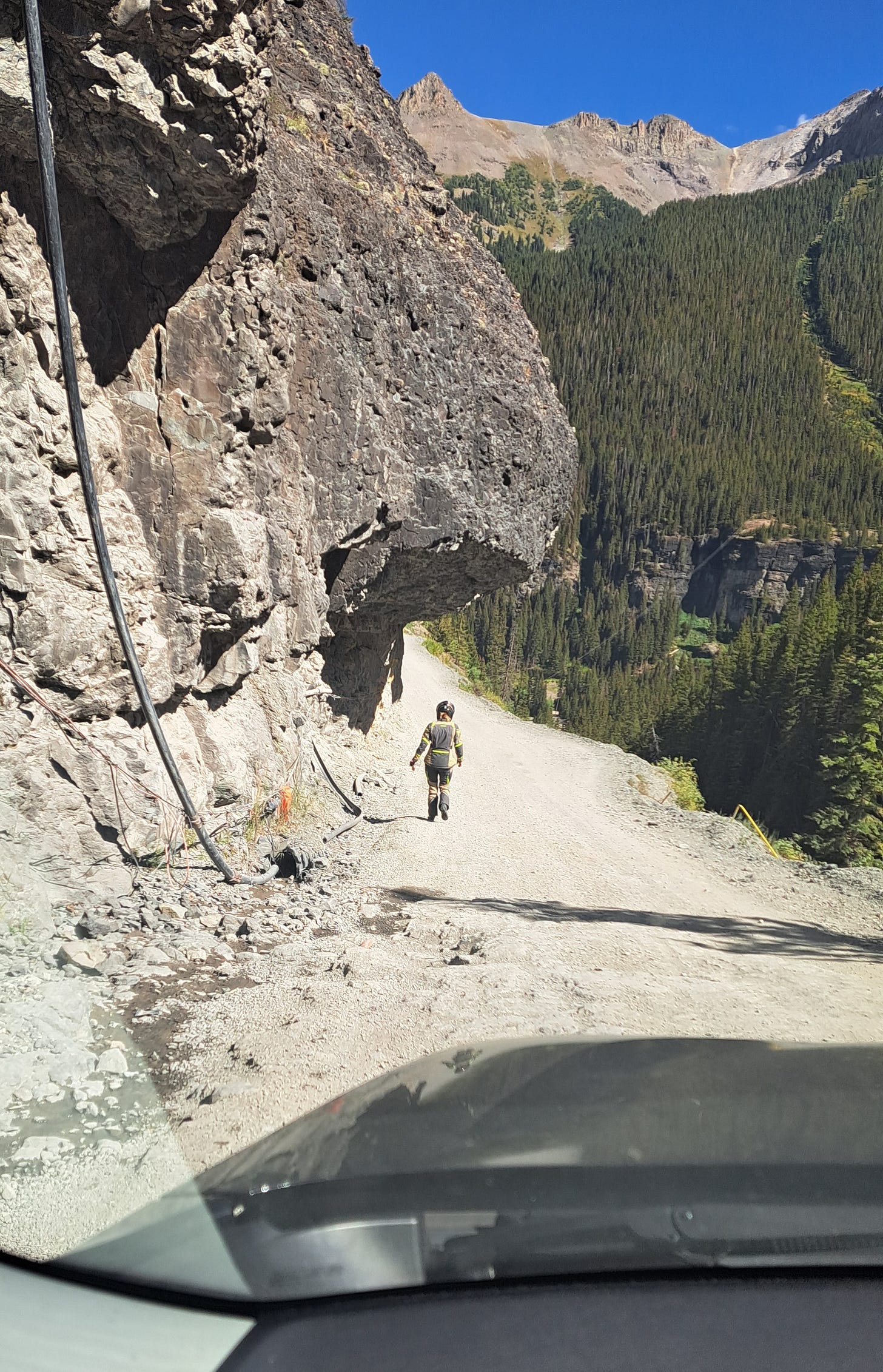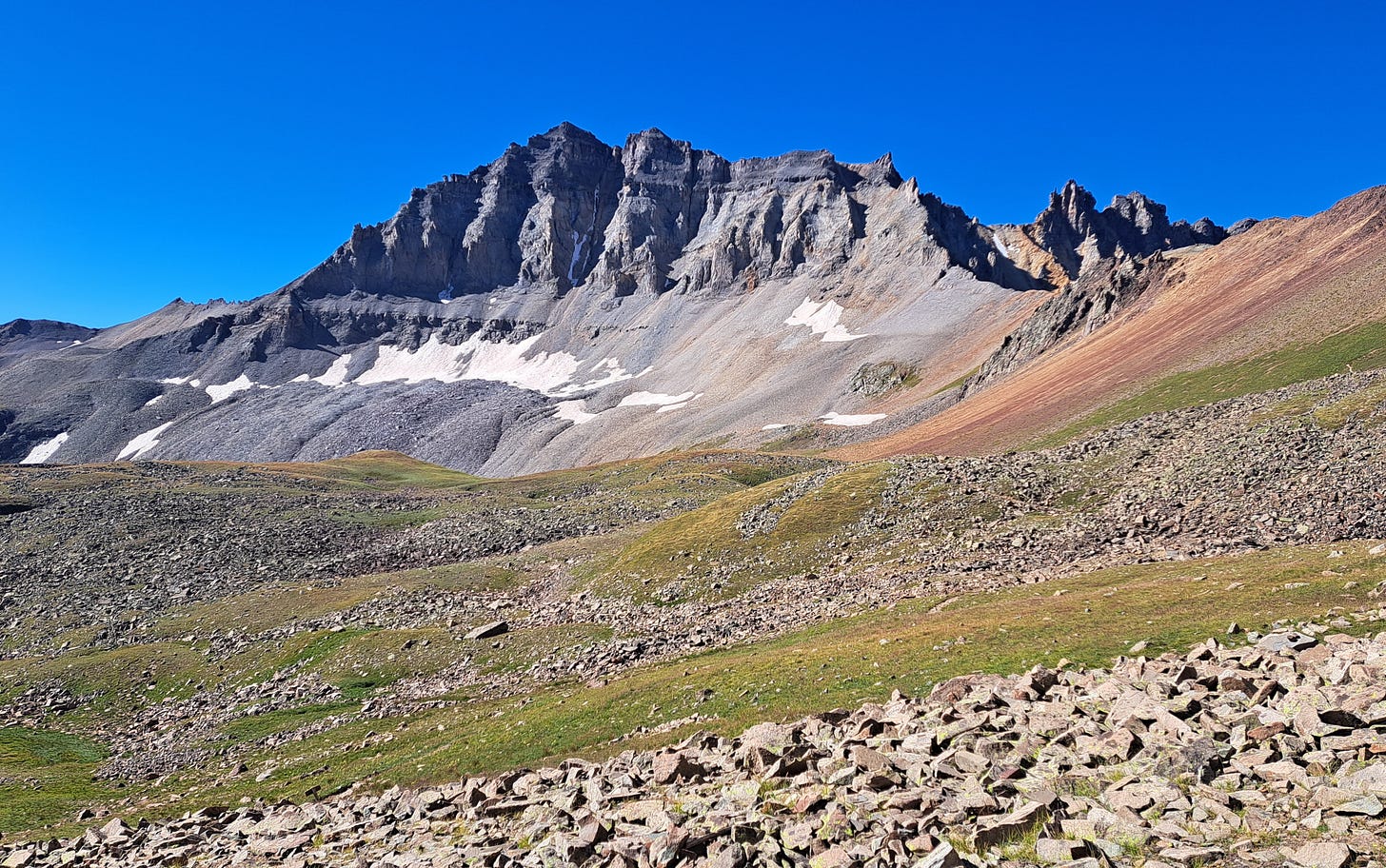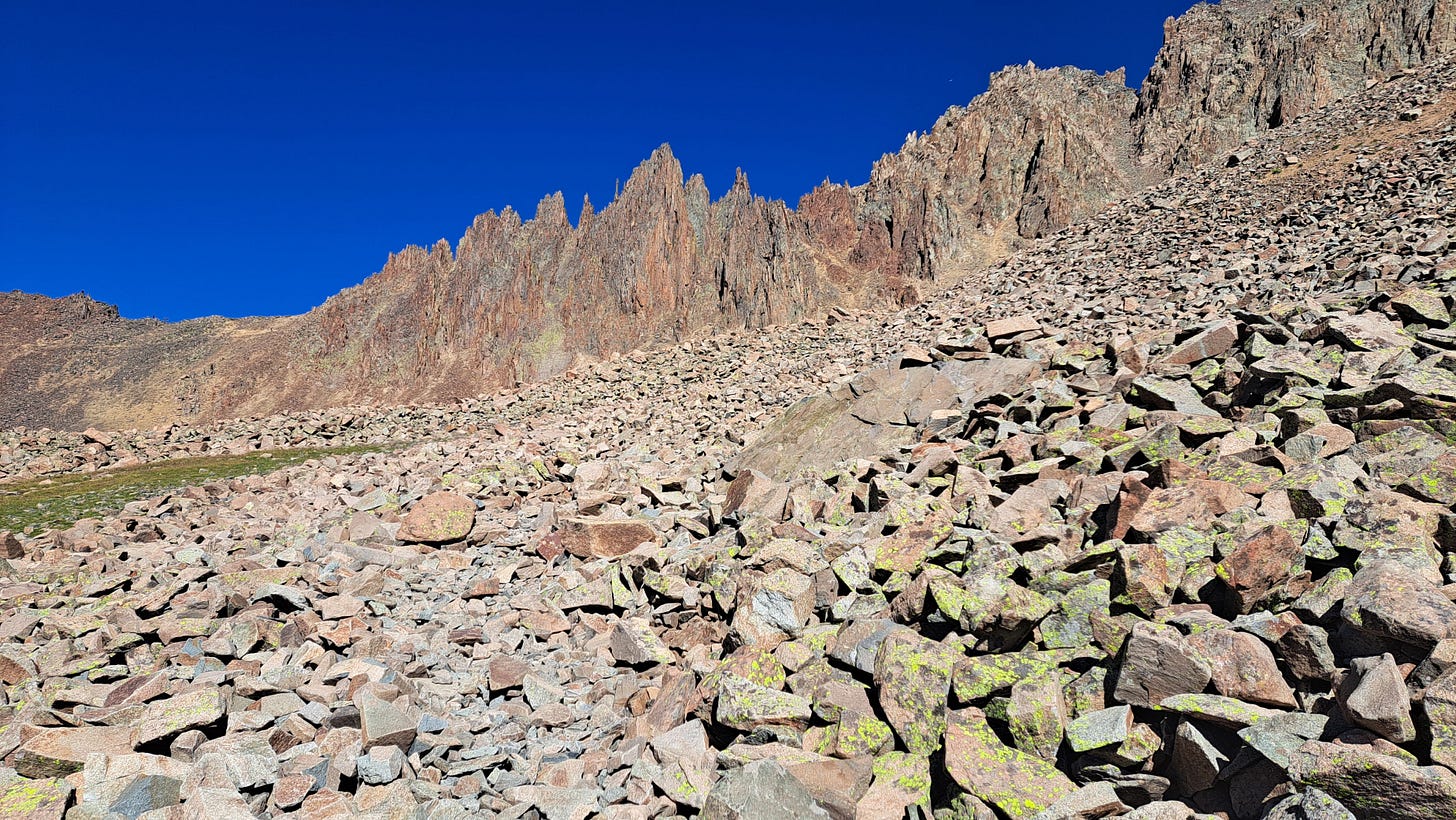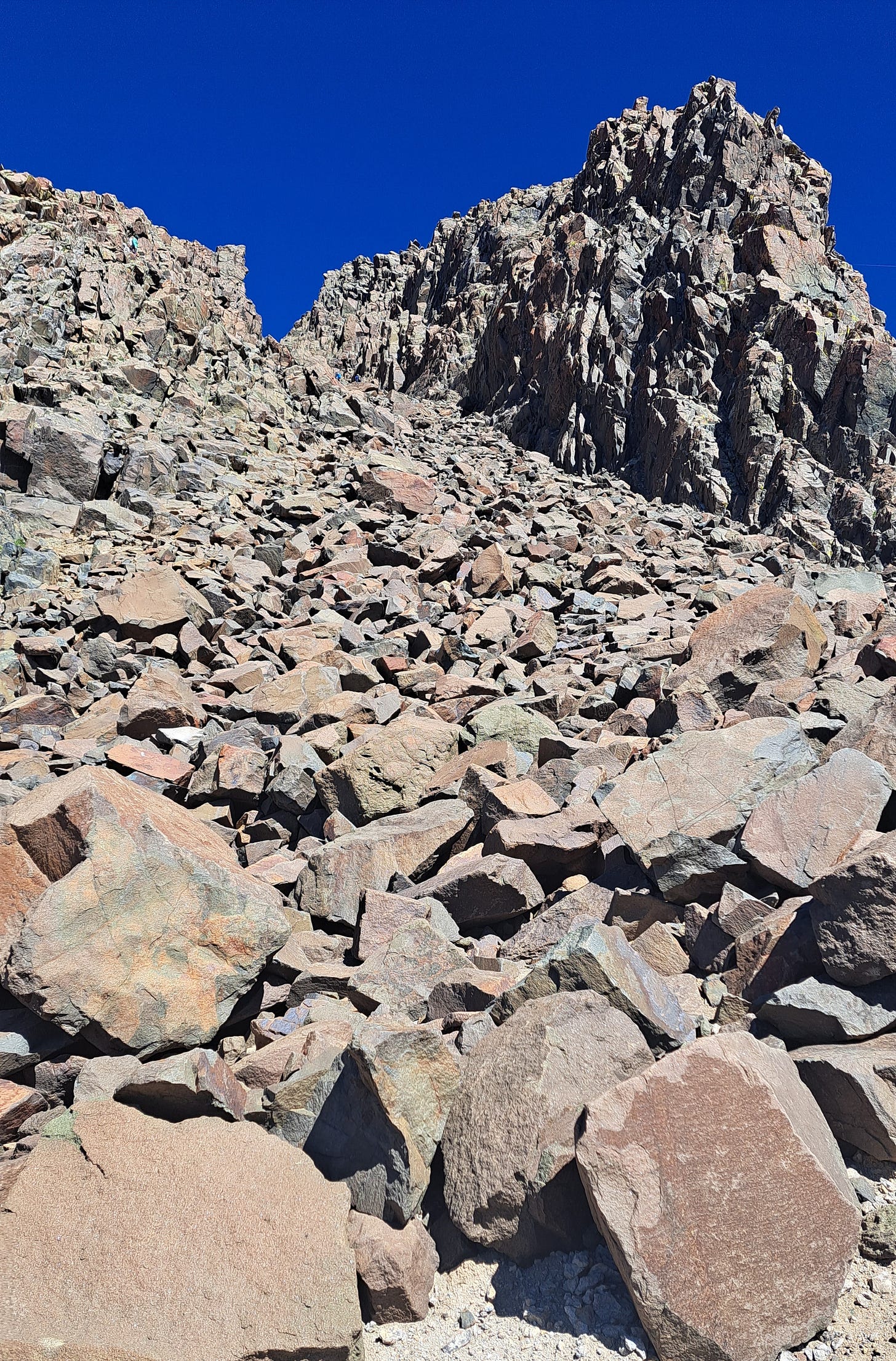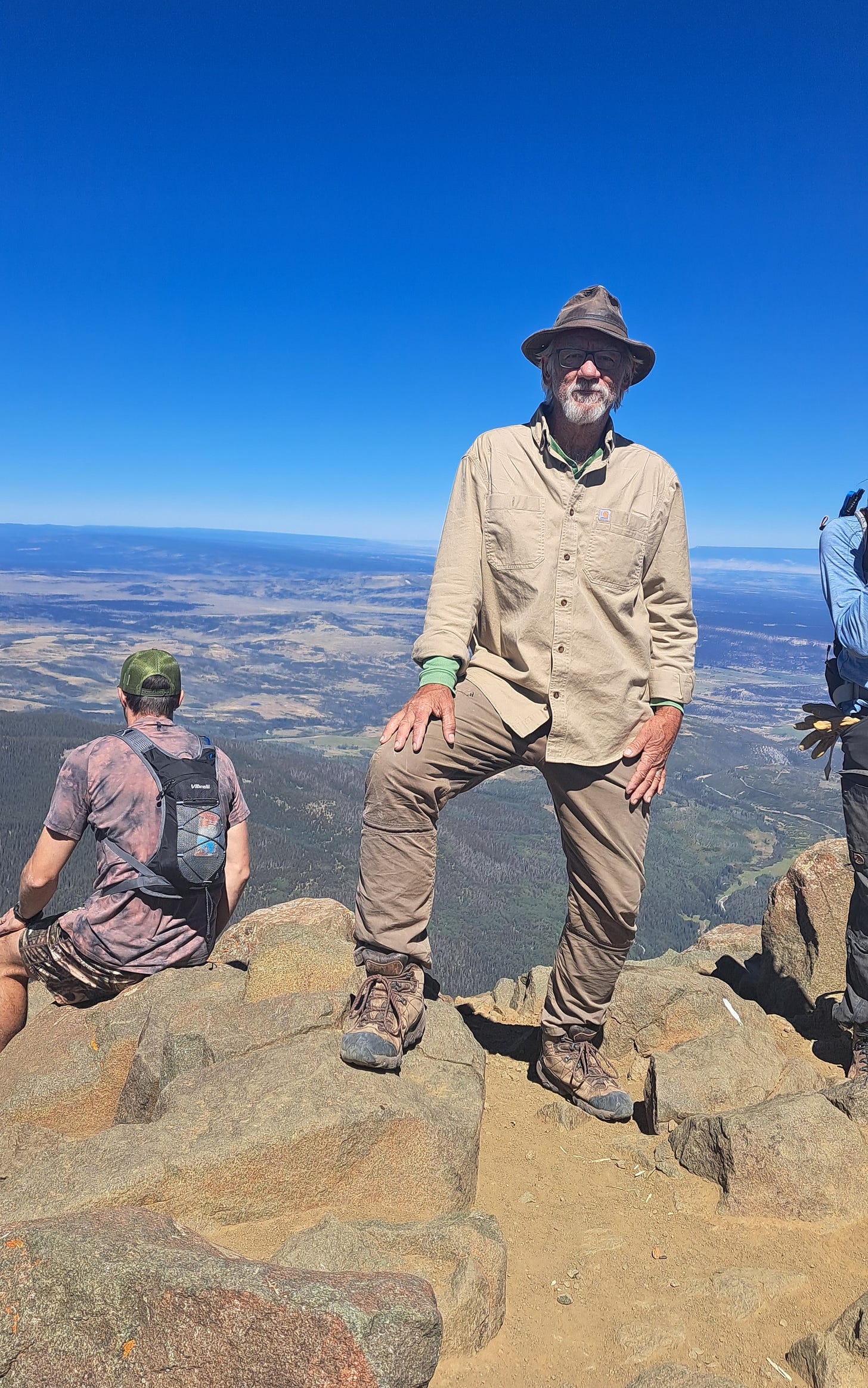If you read my previous post, you’ll see that I dashed off to Colorado to test my mettle on a 14,000-foot peak. It’s been a few years since I’ve trekked that high above sea level, but being 70 and all, I wanted to check out the various body parts to see if it was going to be fun, a grueling pain in the arse, or something else. And, of course, I’ve been dying for years to do some hikin’ and climbin’ in the Rockies.
I am pleased to report that the climb was exceedingly enjoyable.
Having hiked up 13,074-foot Snowdon Peak the day before, I browsed the guidebooks and internet for something fairly accessible and non-technical, but within my focus area of the San Juan Mountains. Mount Sneffels at 14,158 feet and a few miles west of Ouray quickly popped out as a near-perfect candidate. Some regard it as one of the most beautiful peaks in Colorado.
My only hesitation was the extra five miles I’d need to hike up and down 4WD roads to get to and from the actual trailhead—not to mention the 1,800 feet of additional elevation gain required to reach said trailhead. The climb itself would be slightly shorter than the approach hike, so I’d be dealing with more than double the distance and elevation compared to the lucky people driving Jeep Wranglers and such. I was driving a small rental car that surely would have disintegrated into unrecognizable bits within the first quarter mile.
Again, camped in the car north of town, I awoke with the stars still bright and found my way to the start by sunrise. Even the good part of the road was rather exciting, occasionally carved into a cliff face with no room to pass. I soon found the parking zone for the sissy cars like mine, loaded my pack and headed up.
To my good fortune, I’d missed the recent thunderstorms and could bask in early September’s perfectly blue skies with no threat of rain or electrocution. There were no bugs to contend with, and no crowds of four-wheelers turning up the dust, at least not yet. Roads kinda go everywhere here. There area is called Yankee Boy Basin and it was the center of a whole lot of mining activity long ago, though some work continues today.
I quickly rose above timberline and savored the views of awesome-looking peaks in all directions. I wished I could stick around and climb them all, become a tried and true Yankee Boy. But this was slated to be a quick trip—the car was due back in Vegas in three days, where I’d be catching a flight back home.
After a long grind up some very gnarly roads, I reached the big sign at the trailhead. A single Jeep had made it that far. The path immediately entered an enormous area of talus, a mix of cobble and gravel at first, becoming cobble and boulders farther up. In fact, the San Juans are noted for how shattered and loose the rocks are.
Swithbacks climbed steeply, before becoming intermittent, then disappearing altogether. For the next several hundred feet of vertical, hikers would need to find their own way through the plummeting rubble without dislodging rocks onto anyone below.
At a 13,500-foot saddle, the route turns left and ascends another rubble heap leading up the steep Lavender Couloir. I noticed I was catching up with another party of folks much younger than I, and it suddenly dawned on me that I was already 500 feet higher than the summit I’d scrambled up the day before. Maybe I was better acclimated, or just smug, but the extra altitude went pretty much unnoticed. I hardly needed to stop for breaks.
A class-3 V-notch on the left led us out of the couloir and onto the final slabby rocks leading to the second-highest summit in the San Juan Mountains. It was quite a vantage point, as I stood there content with my fellow scramblers, eating up the spectacle of so many craggy peaks nearby. Without a doubt, this was the best trek up a mountain I’ve enjoyed so far this year.
I sure hope I can still do this at 80.
You can browse my list of summits for 2023 here.




